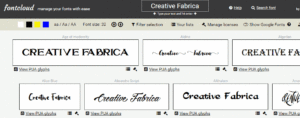Want to learn UX from the ground up? Get an entire collection of UX books covering fundamentals, projects, tips and tools & more with SitePoint Premium. Join now for just $9/month or try our 7 day free trial.
Let’s start with this premise:
The vast majority of UX defects don’t come from a lack of skill or talent or technique or process.
They don’t exist because there are no UXers or Designers on staff. They don’t exist because nobody “gets” the idea of good UX or UI design.
They don’t, in my experience, exist because people don’t know what they’re doing.
That certainly happens, to be sure. But in the last five years of my nearly three-decade career in particular, it’s exceedingly rare.
Instead, what I’ve seen is that UX and design issues that are present in software products — sites, apps, systems — come directly from misalignment of individual intent. And there are three flavors of this: personal, organizational and political.
And in the interest of being even more mysterious and cryptic, I’ll say this: while I’m sure you’ve heard that you should focus on and uncover that intent, I say it’s a hell of a lot deeper than that.
In fact, the most mission-critical thing that needs to happen in project planning is the one thing that’s almost never discussed. You don’t read about it in articles or blog posts. You don’t see it in videos or online courses or keynote speeches.
In fact, virtually no one talks about it at all.
Which, of course, is why you and I, dear reader, are here together now. To share a story.
I worked with a client several years ago, and my experience with them taught me a lesson I’ve never forgotten — and never will.
That lesson came, like most things, the hard way.
The client was a 2.8-billion-dollar organization, at the top of its industry. Basically, they served as in-house fulfillment for nearly every piece of personalized, printed collateral investors receive from just about any and every investment organization you can think of. They owned 85% of that market.
But being that big also meant that they were unbelievably sloooooooooooooow — slow to adapt to change, to the pace of technology, to the growing demand by end-consumers to research and manage their investments themselves.
So the company’s clients — the Merrill Lynches and TD Ameritrades and Edward Jones of the world — had been screaming for an online, self-service portal solution from my client for well over a year … and they had nothing to offer but promises of “we’re working on it.”
By the time I got to them, several of their biggest clients had become tired of waiting; they cancelled their million-dollar contracts and began developing their own solutions for their customers. So big, big money was being lost on a steady basis.
In digging to find out why they weren’t able to at least roll out a solid MVP for clients, I learned that the stumbling block was a disconnected workflow made up of several legacy systems and an unreal amount of human intervention. Add in a shocking lack of consistency across processes and practices and a willingness to jump and deliver different flavors of custom functionality for every client, and you’ve got a recipe for chaos.
Every single job was, in essence, a custom project, with very little repeatable efficiency.
Fast-forward: after several months, we developed a recommendation for replacing these cobbled-together systems and processes with Adobe Livecycle, which, at the time, had the processing/automation power and the tight integration they needed between the print and digital worlds. So I and four other people dotted i’s and crossed t’s and presented comprehensive recommendations and budgets.
And were met with complete and total hostility from stakeholders most closely connected to customer fulfillment.
I’m not talking about full-blown screaming matches, argument or pushback. More like a deep, dangerously simmering silent treatment.
A total refusal to discuss or share.
Just folded arms, dead silence and stares you could feel burning a hole between your eyes. The most we got, in meeting after meeting, was various flavors of “we’re not going to do that.”
But I don’t give up that easily.
So, as is my way, I kept digging; kept asking questions of different people in the organization at different levels. I worked my way up the chain until, finally, I met the man in charge of what they called Digital Fulfillment Services — who, for the last four months, had not been present in a single meeting.
This person took us downstairs, into the belly of their corporate headquarters, and showed us the sea of monitors, CPUs, servers and printing equipment that made up their current fulfillment services. He was cheerful, explaining what every piece did and how it worked. Finally, I thought, we’re getting somewhere. This is good.
Except … it wasn’t.
When the tour was over, this executive suddenly wheeled around on me as if he had been hiding a knife for the past hour. Poking me in the chest, he told me something I’d never forget:
You had better listen up. My team and I, these guys here, we built every inch of what you see here from the ground up. These custom systems are our babies, and these f——ing “challenges” you keep going on about are the reasons we all have jobs.
It’s my job to protect these people and their families, and I am telling you: if you continue to suggest automated processes and systems to replace the customer work we have here, I will KILL this entire project faster than you can imagine. And you better believe I have the power and authority to do that.”
I was, to say the absolute least, taken aback.
I had no idea that running and maintaining this makeshift, improvised collection of disparate machines and code was the only thing standing between these 120 people and unemployment.
Lesson learned.
That was the gig where I learned what has become my cardinal rule of long-term UX consulting gigs: on day one, I want at least one representative from every department in the organization present in the session.
Anyone even tangentially connected to what we’re doing here. Because if there’s a bull in the room, I want to know who it is — and what that person’s intent and agenda is — right now, before we do anything.
If that can’t happen, or if the client won’t agree to it, I don’t take the gig.
In the story above, had I known the Sword of Damocles hanging over the heads of these folks existed, I would have gone about the work in a very different manner. I would have started with them first. With their roles, their work, their intent — and their fear.
So as we wrap this up, I ask you to always remember this:
The vast majority of stubborn opposition you will ever face comes from fear. And that fear will trump best practice every day of the week.
Your initial planning efforts should be focused squarely on surfacing that fear first, before you do anything else.
Because once it’s out on the table, once those folks realize you’re here to alleviate it, the conversations and collaboration you have will be a thousand times more productive — and a million times more positive.
 Joe Natoli
Joe NatoliJoe Natoli coaches and train UXers, designers and developers to design and deliver great UX & UI, sharpen their skills and propel their careers forward. You can see his work at givegoodux.com.






